Home>Articles>Landscape Lighting Ideas For Enjoying Your Outdoor Spaces After Dark
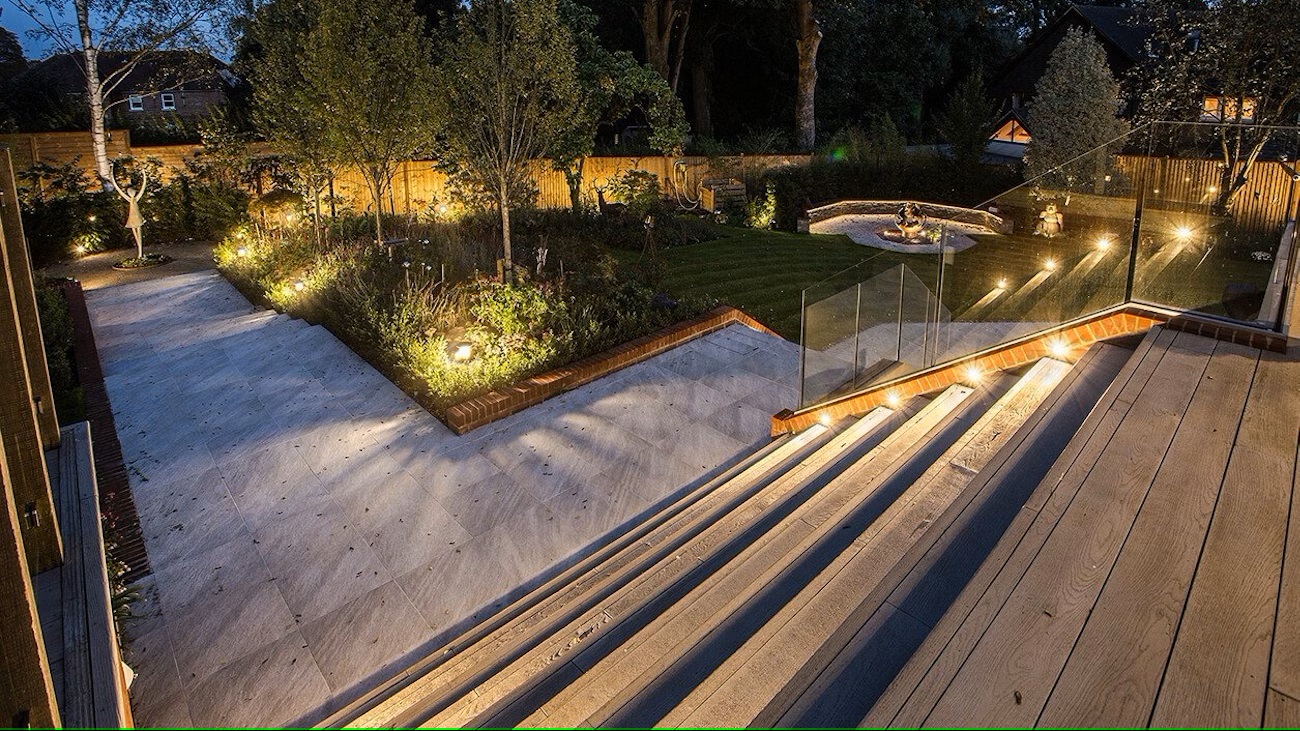

Articles
Landscape Lighting Ideas For Enjoying Your Outdoor Spaces After Dark
Modified: March 22, 2024
Get inspired with these landscape lighting ideas to transform your outdoor spaces into a magical oasis after dark. Explore articles for expert tips and creative solutions.
(Many of the links in this article redirect to a specific reviewed product. Your purchase of these products through affiliate links helps to generate commission for Storables.com, at no extra cost. Learn more)
Introduction
When it comes to designing your outdoor spaces, landscaping takes center stage. From lush gardens to serene water features, every element is carefully selected to create a beautiful and inviting environment. But what happens when the sun goes down? That’s where landscape lighting comes in.
Landscape lighting not only illuminates your outdoor spaces after dark, but it also adds an extra layer of charm and functionality to your property. Whether you want to enhance the aesthetics of your garden, create a safe and inviting pathway, or simply extend your outdoor living space, proper lighting design is essential. In this article, we will explore a variety of landscape lighting ideas to help you make the most of your outdoor areas after the sun sets.
But first, let’s discuss some of the benefits that landscape lighting offers. One of the primary advantages is the ability to extend the usability of your outdoor spaces. With well-placed lighting fixtures, you can enjoy your patio, deck, or garden long into the evening hours. Whether you’re hosting a dinner party or simply relaxing with a book, proper lighting creates an inviting ambiance that allows you to make the most of your outdoor living area.
In addition to extending usability, landscape lighting also adds a layer of safety and security to your property. By illuminating pathways, stairs, and entrances, you create a well-lit environment that reduces the risk of accidents and deters potential intruders. Well-lit outdoor spaces also enhance the overall curb appeal of your home, making it more visually appealing and potentially increasing its value.
Now that we understand the benefits of landscape lighting, let’s explore the different types of lighting fixtures that are commonly used in outdoor spaces. From path lights to spotlights, there is a wide range of options available to suit your specific needs and design preferences.
Key Takeaways:
- Landscape lighting not only enhances the aesthetics of outdoor spaces but also extends usability, increases safety, and adds value to your property, making it a multifaceted investment in your home.
- By carefully choosing the right lighting design and fixtures, you can create a captivating and personalized atmosphere that transforms your outdoor spaces into a magical retreat for enjoyment long after the sun sets.
Read more: Outdoor Light Turns On When Dark
Benefits of Landscape Lighting
Landscape lighting offers a multitude of benefits for both the aesthetics and functionality of your outdoor spaces. Let’s delve into some of the key advantages:
- Enhanced Safety: One of the primary benefits of landscape lighting is improved safety. By strategically placing lighting fixtures along pathways, steps, and entrances, you provide illumination that allows for safe navigation, reducing the risk of trips and falls. Well-lit outdoor areas also deter potential intruders, enhancing the security of your property.
- Extended Usability: With landscape lighting, you can maximize the use of your outdoor spaces well into the night. Whether you’re entertaining guests, enjoying a quiet evening outdoors, or simply relaxing after a long day, proper lighting design allows you to make the most of your outdoor living area.
- Enhanced Aesthetics: Landscape lighting adds a magical touch to your outdoor spaces, enhancing the overall aesthetics of your landscaping. By highlighting key features such as trees, sculptures, or architectural elements, you create a visually stunning environment that comes to life after dark. The right lighting design can transform your garden into a captivating and enchanting space.
- Increased Property Value: Well-designed landscape lighting can significantly boost the curb appeal of your property. An attractive outdoor lighting scheme creates a welcoming and visually appealing atmosphere, making your home stand out. This can potentially increase its value should you decide to sell in the future.
- Accentuate Landscape Features: Landscape lighting allows you to highlight and accentuate the unique features of your outdoor spaces. By strategically placing lights near trees, flowerbeds, water features, or other focal points, you draw attention to these elements, creating a focal point and bringing depth and dimension to your landscaping.
- Creates Mood and Ambiance: The right lighting design can set the mood and ambiance for your outdoor spaces. Whether you’re looking for a romantic vibe or a cozy and relaxing atmosphere, landscape lighting can help you achieve the desired ambiance. From warm, soft lighting to vibrant and colorful options, the possibilities are endless.
As you can see, landscape lighting offers a host of benefits that go beyond just functionality. It enhances safety, extends usability, adds visual appeal, increases property value, highlights landscape features, and sets the mood for your outdoor spaces. With these advantages in mind, it’s time to explore the different types of landscape lighting fixtures available and how to choose the right design for your specific needs and preferences.
Types of Landscape Lighting Fixtures
When it comes to landscape lighting, there is a wide range of fixtures available to suit different styles and lighting needs. Here are some of the most common types of landscape lighting fixtures:
- Path Lights: Path lights are one of the most popular types of landscape lighting fixtures. They are typically low-profile fixtures that are installed along pathways, driveways, and stairs to provide illumination and guide people safely through outdoor areas. Path lights come in various styles, including traditional lantern designs or more modern and sleek options.
- Spotlights: Spotlights are ideal for highlighting specific features or focal points in your landscaping. These fixtures emit a focused beam of light, allowing you to direct attention to trees, statues, architectural elements, or other objects that you want to showcase. Spotlights are adjustable, enabling you to control the angle and intensity of the light.
- Up Lights: Up lights, also known as well lights, are buried in the ground and direct light upwards to illuminate trees, shrubs, or the exterior walls of your home. These fixtures create a dramatic and striking effect, emphasizing the vertical elements in your landscape. Up lights come in different sizes and can be used to cast a narrow beam or a wide wash of light.
- Floodlights: Floodlights provide a wide and powerful beam of light, ideal for illuminating large areas such as the entire backyard or a sports court. These fixtures are perfect for adding a layer of security to your property by brightly lighting up large outdoor spaces. Floodlights are available in various sizes and can be controlled to adjust the beam angle and intensity.
- Deck and Step Lights: These fixtures are designed to be installed on decks, stairs, or hardscape surfaces to provide accent lighting and improve safety. Deck lights are usually recessed and provide soft, upward lighting. Step lights, on the other hand, are installed on the vertical face of steps to illuminate stairways and prevent accidents in low-light conditions.
- String Lights: String lights are a popular choice for creating a cozy and festive ambiance in outdoor spaces. These decorative lights are typically suspended between poles or attached to the walls of the patio or pergola. With their warm and inviting glow, string lights add a magical touch and are perfect for outdoor parties or intimate gatherings.
These are just a few examples of the types of landscape lighting fixtures available. Each type serves a specific purpose and can be used to create different effects in your outdoor spaces. When choosing lighting fixtures, consider the overall design of your landscaping, the specific areas you want to illuminate, and the mood or ambiance you wish to create.
Now that you have a better understanding of the different types of landscape lighting fixtures, let’s move on to exploring how to choose the right lighting design for your outdoor spaces.
Choosing the Right Lighting Design
When it comes to landscape lighting, selecting the right lighting design is crucial in enhancing the beauty and functionality of your outdoor spaces. Here are some factors to consider when choosing the lighting design that best suits your needs:
- Goals and Objectives: Start by defining your goals and objectives for landscape lighting. Do you want to create a warm and inviting ambiance? Or are you looking to highlight specific features in your landscaping? By identifying your objectives, you can narrow down the type of lighting design that will best achieve your desired outcome.
- Style and Theme: Consider the overall style and theme of your outdoor spaces. Do you prefer a modern and minimalist design, or a more traditional and rustic look? The lighting design should complement and enhance the existing aesthetic of your landscape. Choose fixtures that align with the overall style and theme of your outdoor environment.
- Functionality: Think about how you plan to use your outdoor spaces. Are you looking to create a cozy seating area for nighttime entertaining, or do you need well-lit pathways for safety and navigation? The lighting design should be tailored to the specific functions and activities that will take place in your outdoor areas.
- Layering Techniques: Layering techniques involve using a combination of different lighting types and fixtures to create depth and dimension in your outdoor spaces. By combining techniques such as uplighting, downlighting, and path lighting, you can achieve a visually appealing and dynamic lighting design. Layering also allows you to control the intensity and direction of the light for different parts of your landscape.
- Energy Efficiency: Consider energy-efficient options when selecting your lighting design. LED bulbs are a popular choice due to their low energy consumption and long lifespan. Look for fixtures with built-in timers or motion sensors to further reduce energy consumption and ensure that the lights only illuminate when needed.
- Professional Assistance: If you’re unsure about the best lighting design for your outdoor spaces, consider consulting with a professional landscape lighting designer. They can assess your space, offer expert advice, and create a customized lighting plan that fits your specific needs and preferences.
Remember, the right lighting design should not only meet your functional and aesthetic requirements but also be tailored to your specific outdoor space. Take into account the unique features of your property, such as existing landscaping, architectural elements, and focal points, when designing your lighting scheme.
Now that you have a better understanding of how to choose the right lighting design for your outdoor spaces, let’s move on to exploring different lighting techniques for different areas of your landscape.
Lighting Techniques for Different Outdoor Spaces
When it comes to landscape lighting, different outdoor areas require different lighting techniques to create the desired effect. Let’s explore some popular lighting techniques for various parts of your outdoor space:
- Highlighting Features and Focal Points: Use spotlighting or uplighting techniques to draw attention to key features in your landscape. This can include trees, sculptures, architectural elements, or even unique plants. By casting focused beams of light on these focal points, you create a dramatic and eye-catching effect that adds depth and interest to your outdoor spaces.
- Creating Pathways and Walkways: Path lighting is essential for safely navigating pathways, stairs, and walkways in your outdoor areas. Use low-level path lights along the edges of the pathway to provide sufficient illumination without causing glare. This not only enhances safety but also adds a charming and inviting atmosphere to your outdoor spaces.
- Enhancing Gardens and Flowerbeds: Garden lighting can transform your flowerbeds and garden into a magical and enchanting space. Consider using well lights or downlights to wash soft, ambient light over your plants and flowers. This technique adds depth and dimension to your garden and creates a captivating visual display.
- Lighting Water Features: Water features such as ponds, fountains, or waterfalls can be beautifully highlighted using underwater or submersible lights. These lights create a mesmerizing effect as they illuminate the flowing water and create reflections. Additionally, consider using well lights or uplights to cast soft, ambient light on nearby landscaping elements to enhance the overall scene.
- Safety and Security Lighting: For safety and security purposes, it’s important to have well-lit entrances, driveways, and outdoor living spaces. Incorporate floodlights or spotlights with motion sensors near entrances and outdoor gathering areas. This ensures that the areas are well-lit when needed, while also deterring potential intruders.
- Creating Outdoor Living Spaces: If you have an outdoor patio, deck, or seating area, consider incorporating lighting into the design. Use string lights or overhead fixtures to create a cozy and inviting atmosphere. Additionally, integrate task lighting options, such as wall sconces or portable lanterns, to provide ample illumination for activities like dining, reading, or entertaining.
Remember, the key to a successful lighting design is to strike a balance between functionality and aesthetics. Experiment with different techniques, light intensities, and angles to find the perfect combination that enhances the beauty and functionality of your outdoor spaces.
Now that we’ve explored various lighting techniques for different outdoor areas, let’s discuss how to highlight specific features and focal points in your landscape.
Read more: What Does Dark Sky Mean In Outdoor Lighting
Highlighting Features and Focal Points
One of the key aspects of landscape lighting is highlighting the unique features and focal points in your outdoor space. By strategically placing lights and using specific techniques, you can draw attention to these elements and create a visually stunning effect. Let’s explore some ideas for highlighting features and focal points in your landscape:
- Trees and Shrubs: Trees and shrubs are often the backbone of a well-designed landscape. By using uplighting techniques, you can showcase the beauty and grandeur of these natural elements. Place ground-level spotlights at the base of a tree to create an upward lighting effect, highlighting the trunk and branches. For larger trees, consider using well lights to illuminate the canopy from below, creating a captivating and ethereal glow.
- Architectural Elements: If you have architectural features on your property, such as columns, arches, or walls, lighting them can add a touch of elegance and sophistication to your outdoor space. Use directional spotlights to graze the surface of these elements, creating dramatic shadows and textures. This technique not only enhances their visual appeal but also adds depth and dimension to your overall landscape design.
- Water Features: Water features, such as ponds, fountains, or waterfalls, can be transformed into mesmerizing focal points in your landscape when illuminated properly. Use underwater lights to create a soft, underwater glow, accentuating the movement and shimmer of the water. If your water feature has cascades or flowing elements, consider using spotlights or uplights to highlight these areas, creating a beautiful play of light and shadow.
- Sculptures and Artwork: If you have sculptures or artwork in your outdoor space, lighting them is a great way to make them stand out and become a focal point. Consider using a combination of spotlights and uplights to highlight the intricate details and contours of the piece. Play with the angle and intensity of the light to create interesting shadows and emphasize the artistic qualities of the sculpture or artwork.
- Outdoor Seating Areas: If you have a cozy seating area or outdoor lounge, lighting can enhance its ambiance and create an inviting atmosphere. Use string lights or overhead fixtures to create a warm and intimate setting. By placing small pathway lights around the seating area, you ensure that the space is well-lit for safe movement while maintaining a pleasant and relaxing atmosphere.
When highlighting features and focal points, it’s important to consider the scale and proportion of the lighting fixtures. Choose fixtures that are proportionate to the size of the feature you are highlighting to create a balanced and visually pleasing effect.
Remember, the goal is to enhance the beauty and visual interest of these elements while creating a cohesive and harmonious overall landscape design. Experiment with different lighting techniques, angles, and intensities to find the perfect combination that brings out the best in your outdoor spaces.
Now that we’ve explored how to highlight features and focal points, let’s discuss the importance of lighting pathways and walkways in your landscape.
Creating Pathways and Walkways
Pathways and walkways play a vital role in guiding people through your outdoor spaces safely and efficiently. Proper lighting along these paths is essential for both functionality and aesthetics. Here are some tips for creating well-lit and visually appealing pathways and walkways:
- Path Lighting Placement: When it comes to lighting pathways and walkways, it is important to choose the right type of fixtures and place them strategically. Low-level path lights are commonly used for this purpose. Install them at regular intervals along the edges of the path to provide sufficient illumination without causing glare. Aim for uniform spacing to create a consistent and balanced lighting effect.
- Lighting Techniques: Consider different lighting techniques to add interest and depth to your pathways. Downlighting, which involves mounting lights on elevated structures or nearby trees, creates a soft and gentle glow that illuminates the path from above. Moonlighting, on the other hand, uses fixtures mounted high above the ground to cast a downward, moonlit effect. These techniques create a subtle and enchanting ambiance along the pathway.
- Overhead Lighting: In addition to path lights, consider incorporating overhead lighting for added visibility and safety. This could include lantern-style fixtures mounted on poles alongside the path or suspended from nearby structures. Overhead lighting helps ensure clear visibility and provides a unique design element, especially in larger outdoor spaces or areas with intricate pathways.
- Lighting Color and Intensity: The color temperature and intensity of the lighting along pathways can greatly impact the overall ambiance. Opt for warm white or soft white bulbs to create a welcoming and inviting atmosphere. Avoid using harsh or overly bright lights, as they can be distracting or overwhelming. Strike a balance between functionality and creating a soothing and pleasant environment.
- Highlighting Pathway Materials: If you have distinctive or visually appealing pathway materials, such as natural stone or decorative pavers, use lighting to highlight their textures and patterns. Small, recessed lights or ground-level fixtures can help accentuate these materials, adding visual interest and guiding people along the path.
- Consideration of Surrounding Landscape: Pay attention to the surrounding landscape when designing your pathway lighting. Incorporate lighting that complements the overall aesthetic and design of your outdoor space. For example, if you have trees or shrubs bordering the path, consider using uplights to illuminate these elements and create a harmonious blend of light and nature.
Remember, the primary goal of pathway lighting is to provide adequate visibility and ensure safe movement throughout your outdoor areas. Additionally, thoughtfully designed lighting can also enhance the beauty and ambiance of your pathways, creating an inviting and enchanting atmosphere.
By considering different lighting techniques, fixture placement, and the surrounding landscape, you can create well-lit and visually captivating pathways and walkways that enhance your overall landscape design.
Next, let’s explore how to enhance your gardens and flowerbeds with the right lighting techniques.
Consider using a combination of different types of landscape lighting, such as path lights, spotlights, and deck lights, to create a layered and dynamic outdoor lighting design that enhances the beauty of your outdoor spaces after dark.
Enhancing Gardens and Flowerbeds
Gardens and flowerbeds are the pride of any outdoor space, and proper lighting can take their beauty to the next level. By using the right techniques, you can enhance the colors, textures, and shapes of your plants and flowers, creating a stunning display even after the sun sets. Here are some tips for enhancing your gardens and flowerbeds with landscape lighting:
- Spotlighting Key Plants: Choose a few standout plants or flowers that you want to showcase and use spotlights to illuminate them. By casting a focused beam of light on these focal points, you accentuate their intricate details and vibrant colors, making them truly stand out in your garden. Experiment with different angles and intensities to find the most captivating effect.
- Uplighting Trees and Shrubs: Trees and shrubs can add height and structure to your garden. Uplighting these elements can create a visually striking effect, especially when their silhouettes are projected against a backdrop. Use ground-level spotlights or well lights to cast light upward, emphasizing the vertical elements of your plants and adding depth to your garden.
- Pathway Lighting: Ensure that your garden pathways are well-lit for safe navigation and to showcase the surrounding greenery. Incorporate low-level path lights along the edges of the path to softly illuminate the walkway. This not only enhances safety but also adds a charming and inviting atmosphere, especially when the pathway is surrounded by blooming flowers or lush foliage.
- Soft Wash Lighting: Consider using soft wash lighting techniques to create a gentle and diffused glow over your flowerbeds. This can be achieved by using well lights or downlights installed strategically in the ground or elevated fixtures. Soft wash lighting highlights the overall beauty and contours of your garden by casting a blanket of light that wraps around the flowers and plants.
- Color Changing Lights: For a captivating and dynamic display, incorporate color-changing lights in your garden. Use LED lights that can transition between various colors to create a mesmerizing effect. This is particularly effective for gardens with white or pale-colored flowers, as the changing hues can truly transform the space and evoke different moods throughout the evening.
- Water Features: If your garden has water features like ponds or waterfalls, lighting them properly can enhance their visual appeal. Consider using underwater or well lights to illuminate the water, creating reflections and highlighting the movement and texture of the flowing water. This can create a serene and tranquil ambiance in your garden.
Don’t forget to consider the specific characteristics of your garden, such as the layout, types of plants, and overall theme or style. Tailor your lighting design to highlight the unique elements and ensure a seamless integration with the existing landscape.
Properly enhancing your gardens and flowerbeds with landscape lighting not only showcases the beauty of your plants but also allows you to enjoy your garden’s splendor even after the sun goes down. So, get creative, experiment with different lighting techniques, and create a mesmerizing garden that will amaze both you and your guests.
Next, let’s explore the importance of lighting water features in your outdoor spaces.
Lighting Water Features
Water features, such as ponds, waterfalls, and fountains, bring a sense of tranquility and beauty to your outdoor spaces. Properly illuminating these water features can enhance their visual impact and create a captivating ambiance. Here are some tips for lighting water features:
- Underwater Lighting: For submerged water features, such as ponds or pools, underwater lighting is the ideal choice. Submersible LED lights can be placed at the bottom of the water feature to create a stunning glow that illuminates the entire area. The lights can be set to various colors or even programmed to change colors, allowing you to create different moods and effects.
- Up lighting: Up lighting is a great technique for illuminating water features with vertical elements, such as waterfalls or cascades. By placing spotlights or well lights at the base of the water feature, you can create a dramatic effect by casting light upwards. This highlights the flow of the water and creates beautiful reflections, enhancing the overall visual impact of the feature.
- Wash Lighting: To create a soft and ambient glow over a larger water feature, consider using wash lighting. This technique involves placing fixtures strategically around the perimeter of the water feature, directing the light towards the surface of the water. The gentle wash of light adds depth and accentuates the movement and textures of the water.
- Floating Lights: Floating lights are a creative way to illuminate your water features. These lights, often shaped like orbs or lanterns, can float on the surface of the water, adding a magical appeal to your pond or pool. Floating lights are available in various colors and can create a captivating shimmering effect as they move with the water.
- Reflections: Consider using lighting to enhance the reflections created by your water feature. By strategically placing lights near the feature, you can optimize the reflection on surrounding objects or nearby structures. This adds an extra layer of visual interest and creates a mesmerizing display.
- Controlled Lighting Effects: To create a dynamic and ever-changing display, you can use lighting controls to adjust the intensity, color, and timing of the lights illuminating your water feature. This allows you to create different moods and effects throughout the evening, whether it’s a tranquil blue glow or a vibrant and energetic display.
When lighting water features, it’s important to consider safety and the protection of electrical components. Ensure that any lighting fixtures used in or near water feature areas are specifically designed for wet environments and installed by a qualified professional.
The proper lighting of water features not only enhances their beauty but also creates a soothing and enchanting atmosphere in your outdoor space. Experiment with different lighting techniques and effects to find the perfect combination that brings your water feature to life at night.
Next, let’s explore the importance of considering safety and security in your landscape lighting design.
Safety and Security Considerations
While landscape lighting adds beauty and functionality to your outdoor spaces, it is important to prioritize safety and security when designing your lighting scheme. Here are some key considerations to keep in mind:
- Pathway Lighting: Adequate pathway lighting is crucial to ensure safe navigation throughout your outdoor areas. Illuminating walkways, stairs, and entrances with path lights or step lights helps prevent accidents and potential injuries. Make sure the lighting is evenly distributed and free from obstructions to provide clear visibility.
- Entrances and Exits: Well-lit entrances and exits are not only visually appealing but also provide a sense of security. Install wall sconces or overhead lights near doorways and gates to welcome guests and deter intruders. Consider incorporating motion sensor lights that activate when someone approaches, providing an added layer of safety and surveillance.
- Lighting for Outdoor Living Spaces: If you have outdoor seating areas, decks, or patios, ensure they are well-lit for safety and security. This includes providing sufficient lighting for cooking, dining, and entertaining purposes. Consider integrating task lighting options such as wall-mounted sconces or overhead lights to provide ample illumination when needed.
- Security Lighting: Incorporating security lighting into your landscape design helps deter potential intruders and protect your property. Motion sensor floodlights near entrances, dark areas, or at the corners of your property can startle and dissuade unwanted visitors. Additionally, consider using timers or home automation systems to simulate occupancy when you are away, giving the impression that someone is home.
- Preventing Glare and Shadows: Glare from overly bright lights can hinder visibility and create temporary blindness. To avoid this, ensure that lighting fixtures are shielded or properly angled to prevent direct light from shining into the eyes. Additionally, be mindful of casting harsh shadows that could obscure vision or create tripping hazards. Aim for balanced lighting that provides an even, natural illumination across your outdoor areas.
- Electrical Safety: When installing landscape lighting, it is important to follow proper electrical safety guidelines. Ensure that all fixtures are appropriately wired, grounded, and protected from moisture. If you are unfamiliar with electrical work, it is best to hire a licensed electrician to ensure a safe and secure installation.
By incorporating these safety and security considerations into your landscape lighting design, you can create a well-lit outdoor space that not only enhances its visual appeal but also provides a safe and secure environment for you, your family, and your guests.
Now that we’ve covered safety and security considerations, let’s explore some energy-saving tips to make your landscape lighting more efficient.
Energy-Saving Tips for Landscape Lighting
While landscape lighting adds beauty and functionality to your outdoor spaces, it is important to be mindful of energy consumption. By implementing energy-saving practices, you can reduce your environmental impact and save on energy costs. Here are some tips to make your landscape lighting more efficient:
- LED Lighting: Consider using LED (Light Emitting Diode) lights for your landscape lighting. LED bulbs are energy-efficient and have a longer lifespan compared to traditional incandescent or halogen bulbs. They use significantly less energy while providing ample illumination for your outdoor spaces.
- Solar-Powered Lights: Solar-powered lights are an excellent eco-friendly option for landscape lighting. These lights are powered by sunlight and have built-in solar panels that recharge the batteries during the day. They automatically turn on at dusk and can provide soft illumination throughout the night. Solar-powered lights require no additional wiring or electricity, making them a hassle-free and energy-saving choice.
- Use Timers: Incorporating timers into your landscape lighting setup helps control when the lights turn on and off. Set the timers to align with the natural daylight hours or the specific times you desire illumination. This ensures lights are not left on unnecessarily during daytime hours, saving energy and prolonging the life of the bulbs.
- Motion Sensors: Install motion sensor lights in areas that only require illumination when someone is present, such as entrances or paths. These lights will automatically switch on when motion is detected and turn off after a set period of time. Motion sensor lights are not only energy-saving but also provide an added layer of security to your outdoor spaces.
- Zoning and Dimming: Create different zones for your landscape lighting and install dimmers to allow you to adjust the intensity of the lights. This gives you the flexibility to customize the lighting levels to suit different occasions and conserve energy when less illumination is needed.
- Maintenance and Cleaning: Keep your lighting fixtures clean and well-maintained to ensure optimal performance. Dirt, debris, or even insects can reduce the efficiency of the lights. Regularly clean the fixtures and remove any obstructions to maximize their energy-saving potential.
- Selective Lighting: Instead of illuminating your entire outdoor space, take a selective approach by focusing on specific areas or features. This not only saves energy but also creates a more dramatic and visually appealing effect.
By implementing these energy-saving tips, you can enhance the efficiency of your landscape lighting while minimizing your environmental impact. Not only will you reduce your energy consumption and carbon footprint, but you will also save on energy costs in the long run.
Now that we’ve explored energy-saving tips, let’s address the maintenance and troubleshooting of landscape lighting systems.
Maintaining and Troubleshooting Landscape Lighting Systems
Regular maintenance and troubleshooting of your landscape lighting system are necessary to ensure its optimal performance and longevity. Here are some tips to help you maintain and troubleshoot your landscape lighting system:
- Inspect Regularly: Regularly inspect your lighting fixtures to identify any issues or signs of wear. Check for loose connections, damaged wiring, or corroded parts. Address any problems promptly to prevent further damage or malfunction.
- Clean and Clear: Keep the fixtures clean and free of dirt, debris, and vegetation. Regularly remove any leaves, mulch, or grass clippings that may accumulate around the fixtures. This will prevent obstructions and ensure proper illumination.
- Replace Bulbs: Regularly check the bulbs in your landscape lighting fixtures and replace any that are burned out or dim. Make sure to use the correct type and wattage of bulbs specified by the manufacturer. This will ensure consistent brightness and optimal performance.
- Check Electrical Connections: Inspect all electrical connections to ensure they are tight and secure. Loose connections can cause flickering or intermittent lighting. If you notice any loose connections, tighten them carefully, ensuring not to damage the wiring or connectors.
- Protect from Elements: Protect your landscape lighting fixtures from extreme weather conditions, such as heavy rainfall, snow, or prolonged exposure to direct sunlight. Use weatherproof enclosures or covers for exposed fixtures, and consider installing surge protectors to safeguard against electrical surges caused by lightning or power fluctuations.
- Test the System: Regularly test your landscape lighting system to ensure all fixtures are functioning correctly. Turn the system on at dusk and observe the performance of each light. If you encounter any issues, check the connections, replace bulbs if necessary, and consult the manufacturer”s troubleshooting guide if available.
- Seek Professional Help: If you encounter persistent issues or are unsure about troubleshooting electrical components, it is best to seek help from a professional electrician or landscape lighting specialist. They have the expertise and tools to diagnose and resolve complex electrical issues effectively.
Maintaining and troubleshooting your landscape lighting system will extend its lifespan and ensure reliable performance. By addressing any issues promptly and performing regular maintenance, you can enjoy the beauty and functionality of your landscape lighting for years to come.
Now that we’ve covered maintenance and troubleshooting, let’s wrap up our discussion on landscape lighting.
Conclusion
Landscape lighting is a powerful tool that can transform your outdoor spaces into enchanting and inviting areas long after the sun goes down. With the right lighting design, you can enhance the beauty of your landscaping, create a safe and secure environment, and extend the usability of your outdoor living spaces.
In this article, we explored the benefits of landscape lighting, including improved safety, extended usability, enhanced aesthetics, increased property value, and the ability to accentuate features and focal points. We discussed various types of landscape lighting fixtures, such as path lights, spotlights, up lights, floodlights, and string lights, all of which can be tailored to suit your specific needs and design preferences.
We also delved into the importance of choosing the right lighting design, considering factors such as goals and objectives, style and theme, functionality, layering techniques, energy efficiency, and the option for professional assistance. By carefully selecting your lighting design, you can create an atmosphere that perfectly complements your outdoor spaces.
We explored lighting techniques for different outdoor areas, including highlighting features and focal points, creating pathways and walkways, enhancing gardens and flowerbeds, and illuminating water features. Each technique plays a crucial role in enhancing the visual appeal and functionality of your outdoor spaces.
We discussed the significance of safety and security considerations, emphasizing the need for proper pathway lighting, well-lit entrances, and security lighting to protect your property and ensure the well-being of you and your loved ones.
Energy-saving tips were also shared to help you reduce environmental impact and save on energy costs. From using LED lighting and solar-powered lights to implementing timers and motion sensors, these tips can make your landscape lighting more efficient and eco-friendly.
We highlighted the importance of maintaining and troubleshooting your landscape lighting system to ensure optimal performance. Regular inspections, cleaning, bulb replacements, checking electrical connections, and protecting fixtures from the elements are just a few measures that can extend the life and reliability of your system.
As you embark on your landscape lighting journey, remember to strike a balance between functionality and aesthetics. Tailor your lighting design to suit the unique features and characteristics of your outdoor spaces, and don’t be afraid to experiment with different techniques and effects to create a captivating and personalized atmosphere.
By incorporating these ideas and principles into your landscape lighting, you can transform your outdoor spaces into a magical retreat that you can enjoy long after the sun sets. So, start exploring the possibilities, unleash your creativity, and let your landscape illuminate the night!
Frequently Asked Questions about Landscape Lighting Ideas For Enjoying Your Outdoor Spaces After Dark
Was this page helpful?
At Storables.com, we guarantee accurate and reliable information. Our content, validated by Expert Board Contributors, is crafted following stringent Editorial Policies. We're committed to providing you with well-researched, expert-backed insights for all your informational needs.
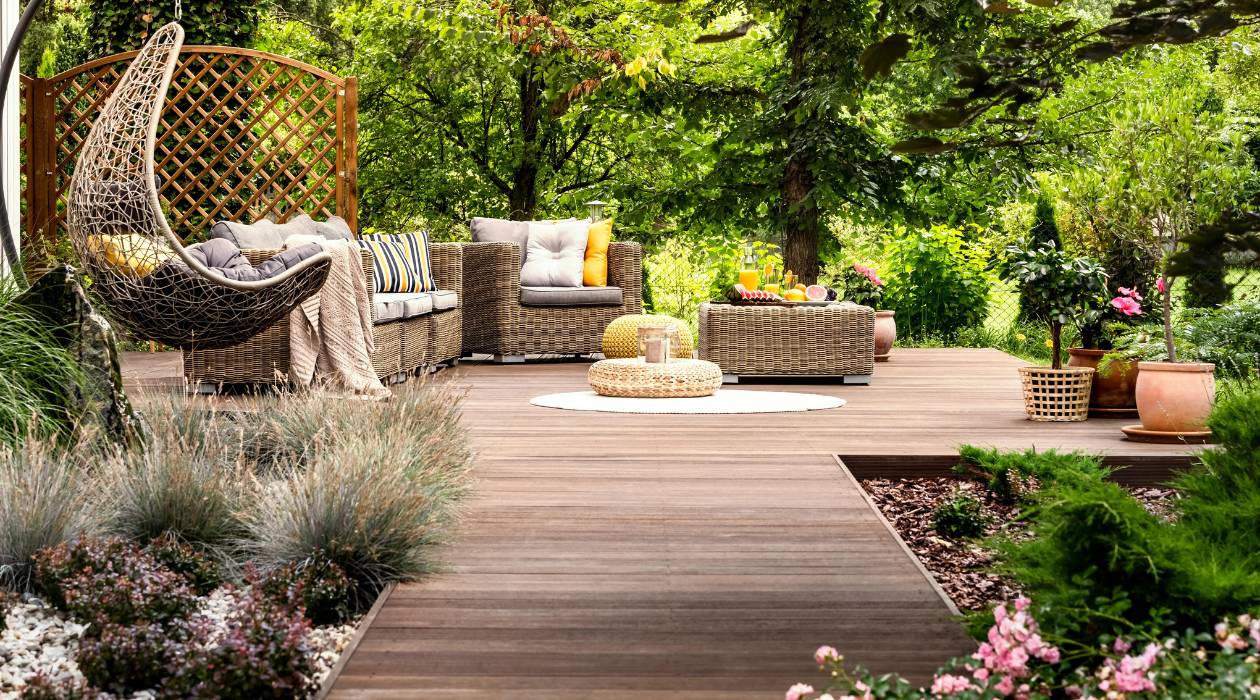
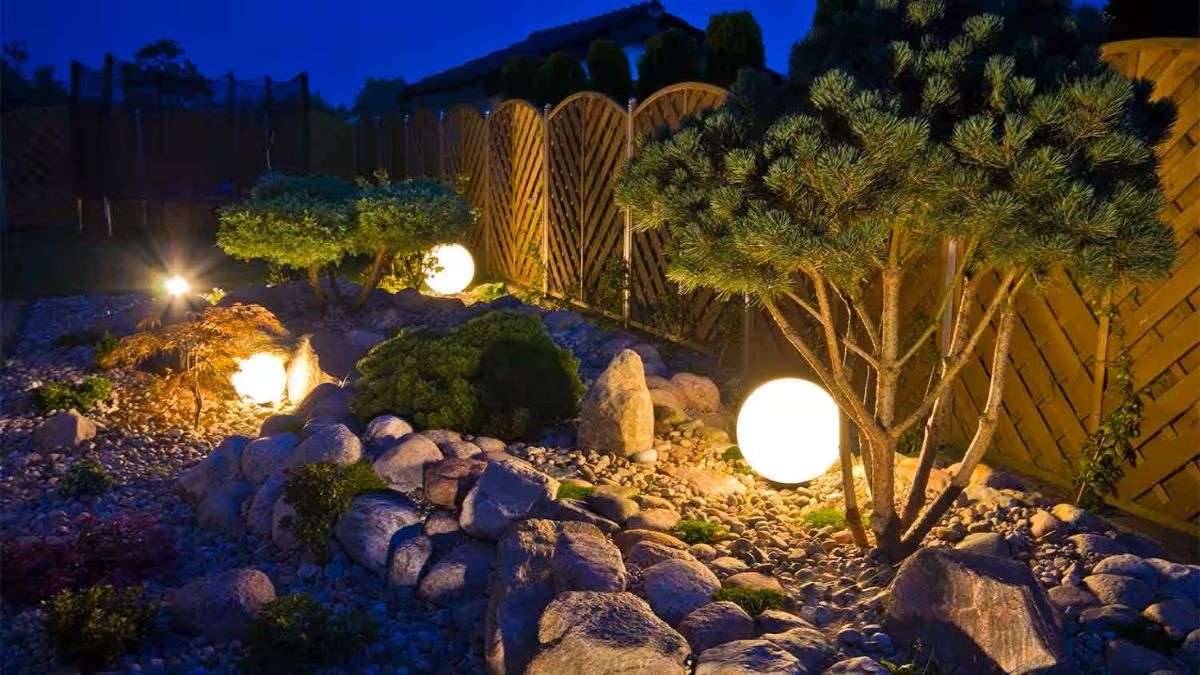
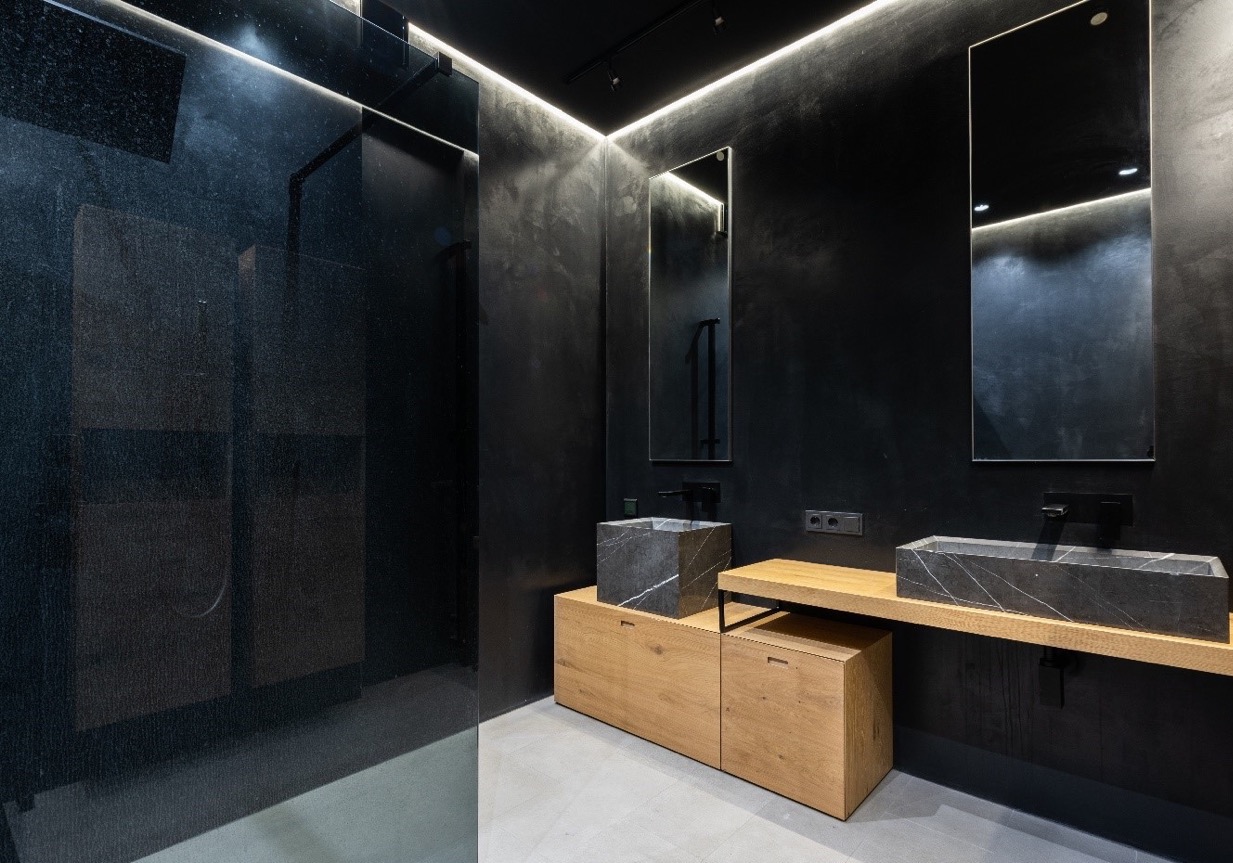
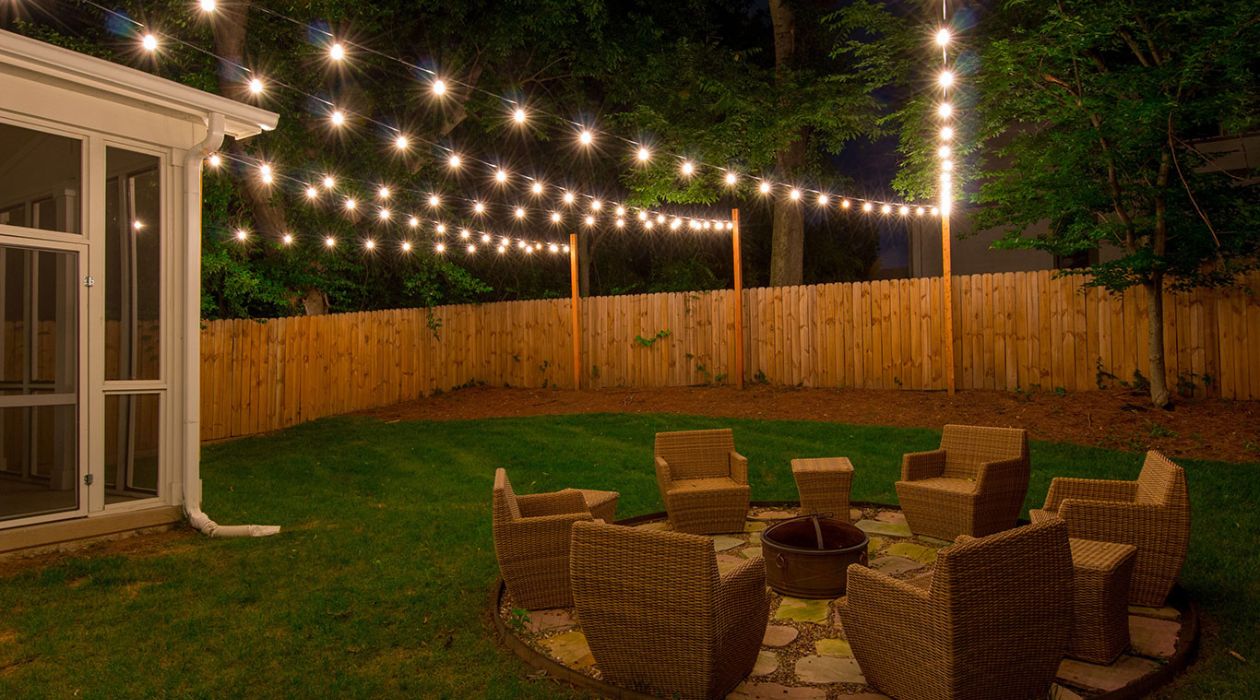
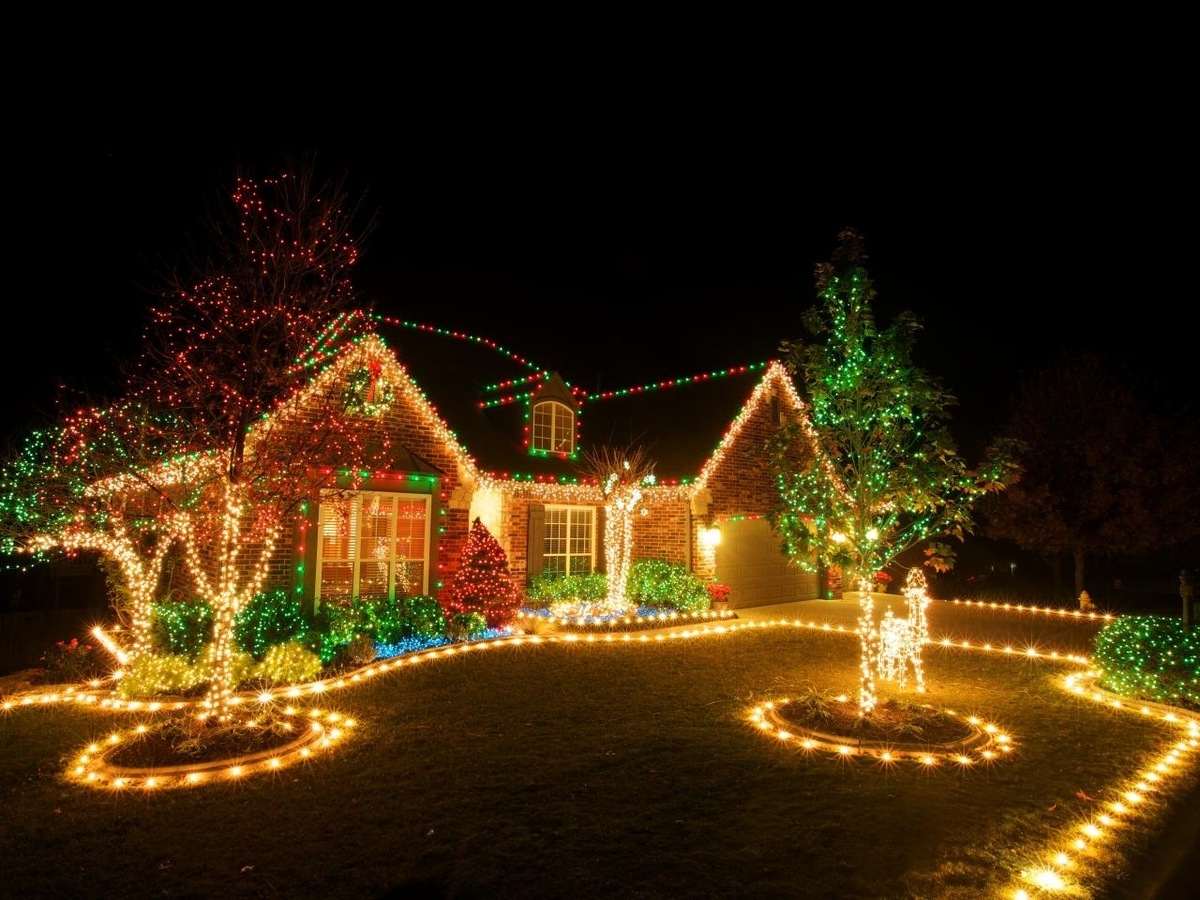
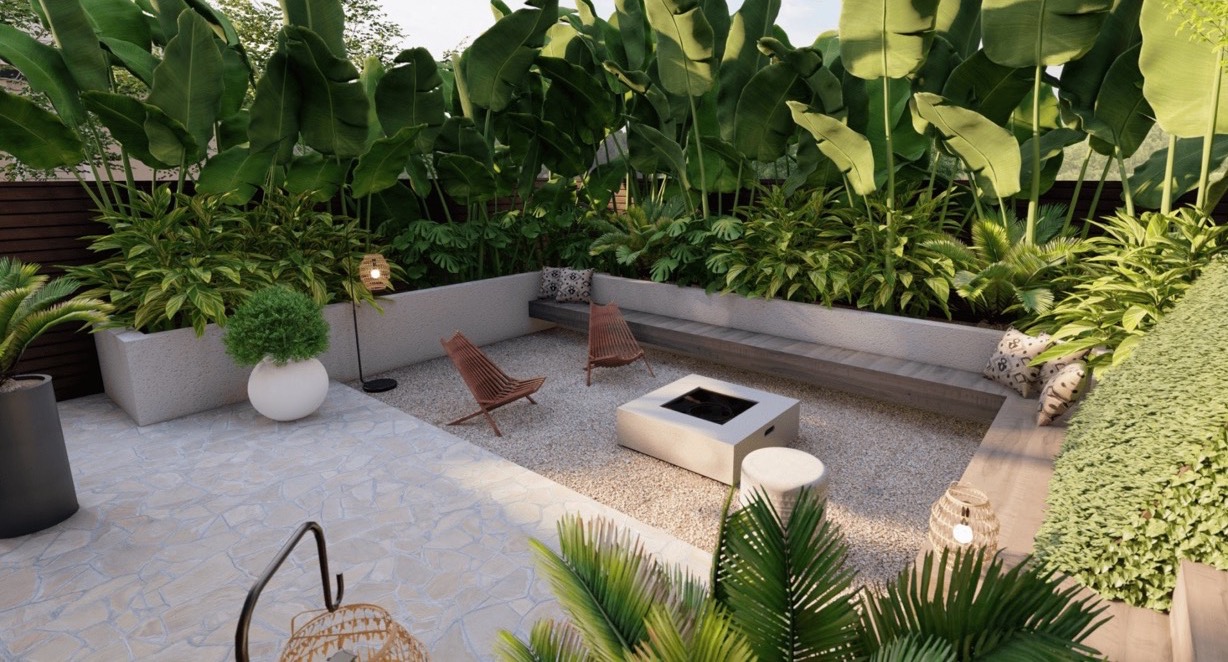
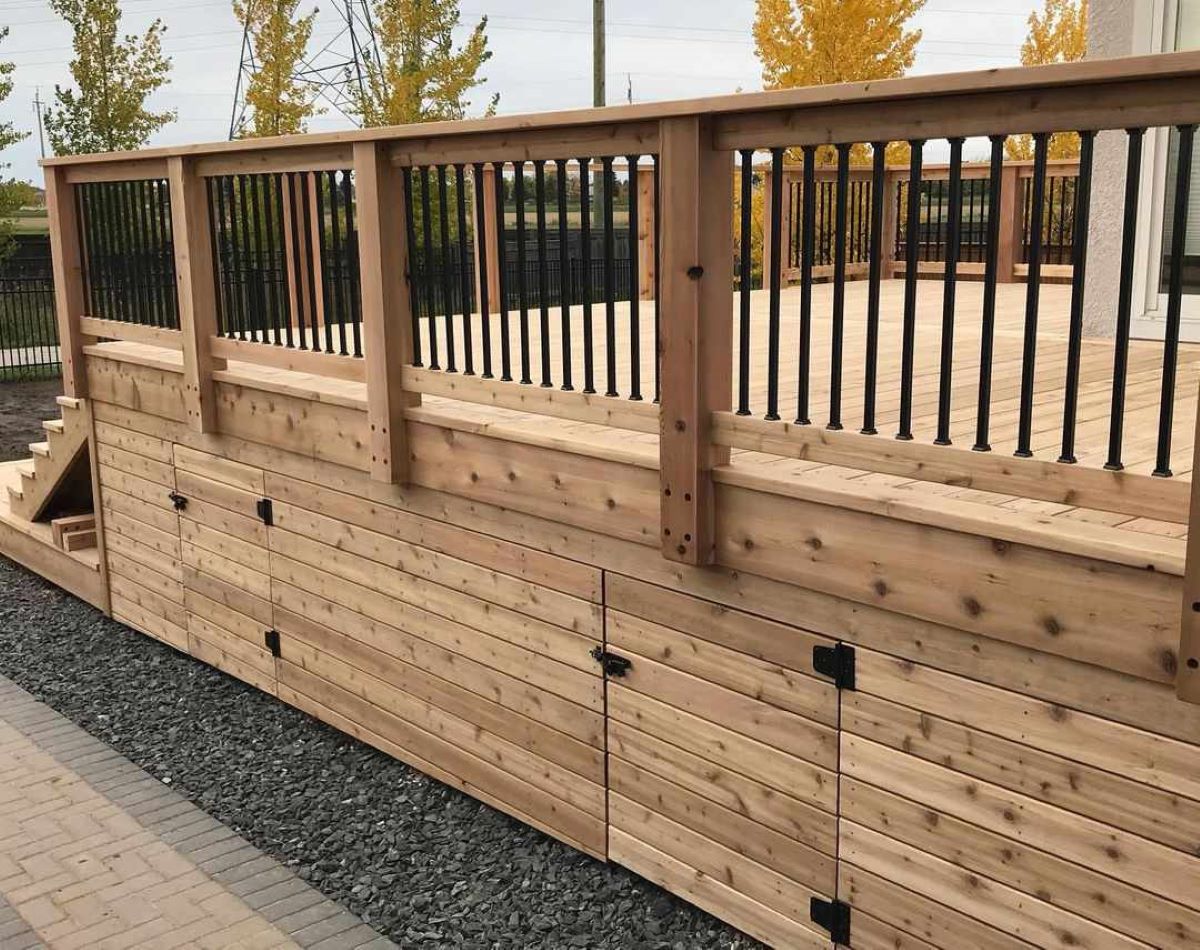
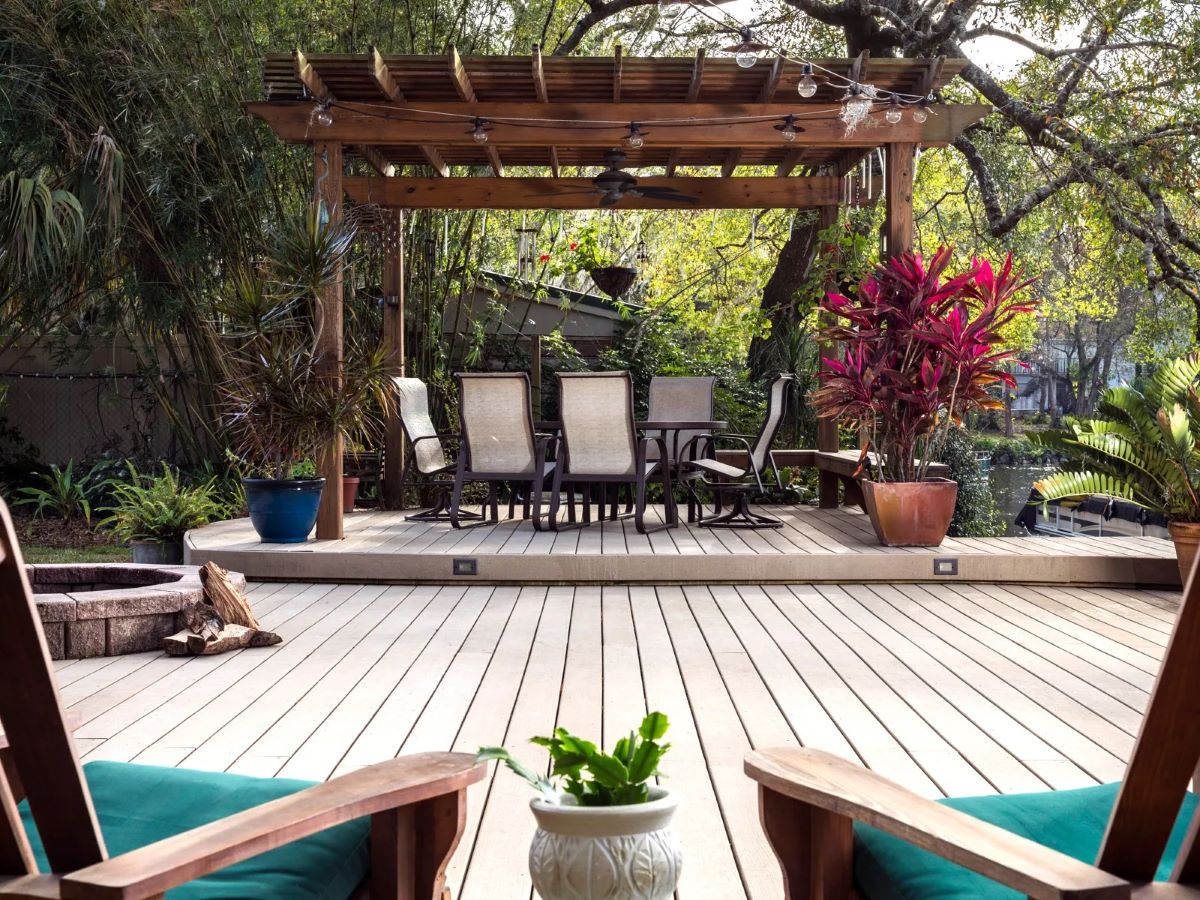
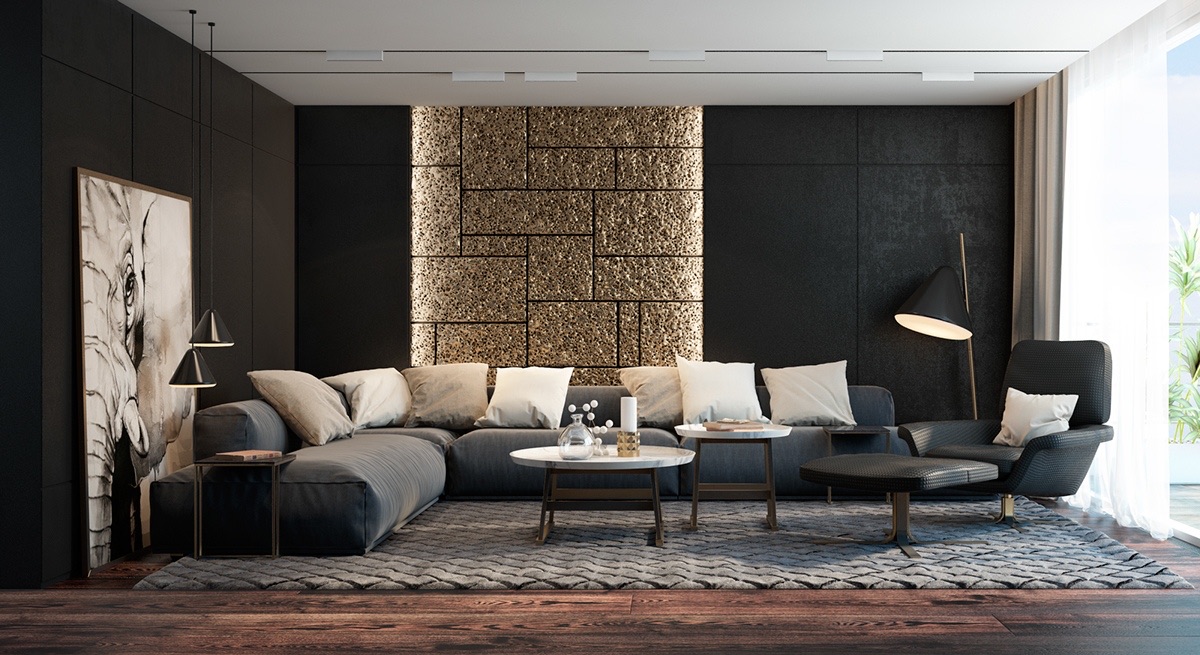


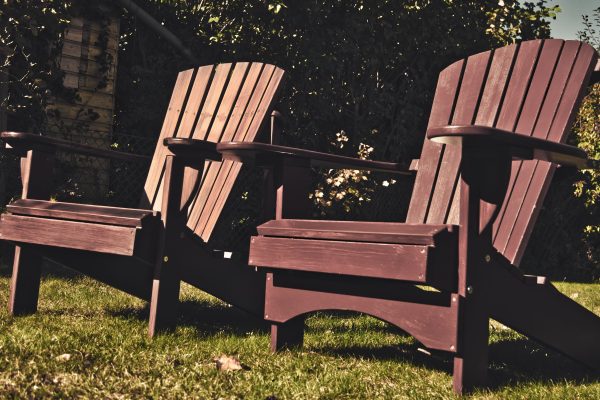


0 thoughts on “Landscape Lighting Ideas For Enjoying Your Outdoor Spaces After Dark”